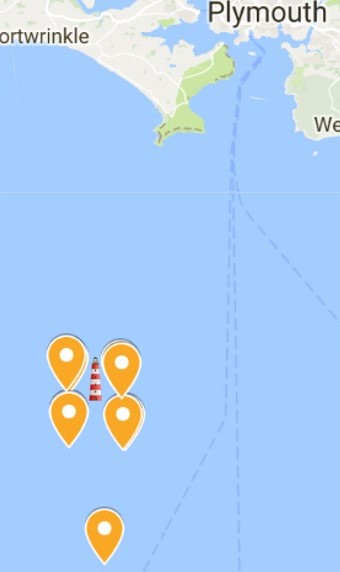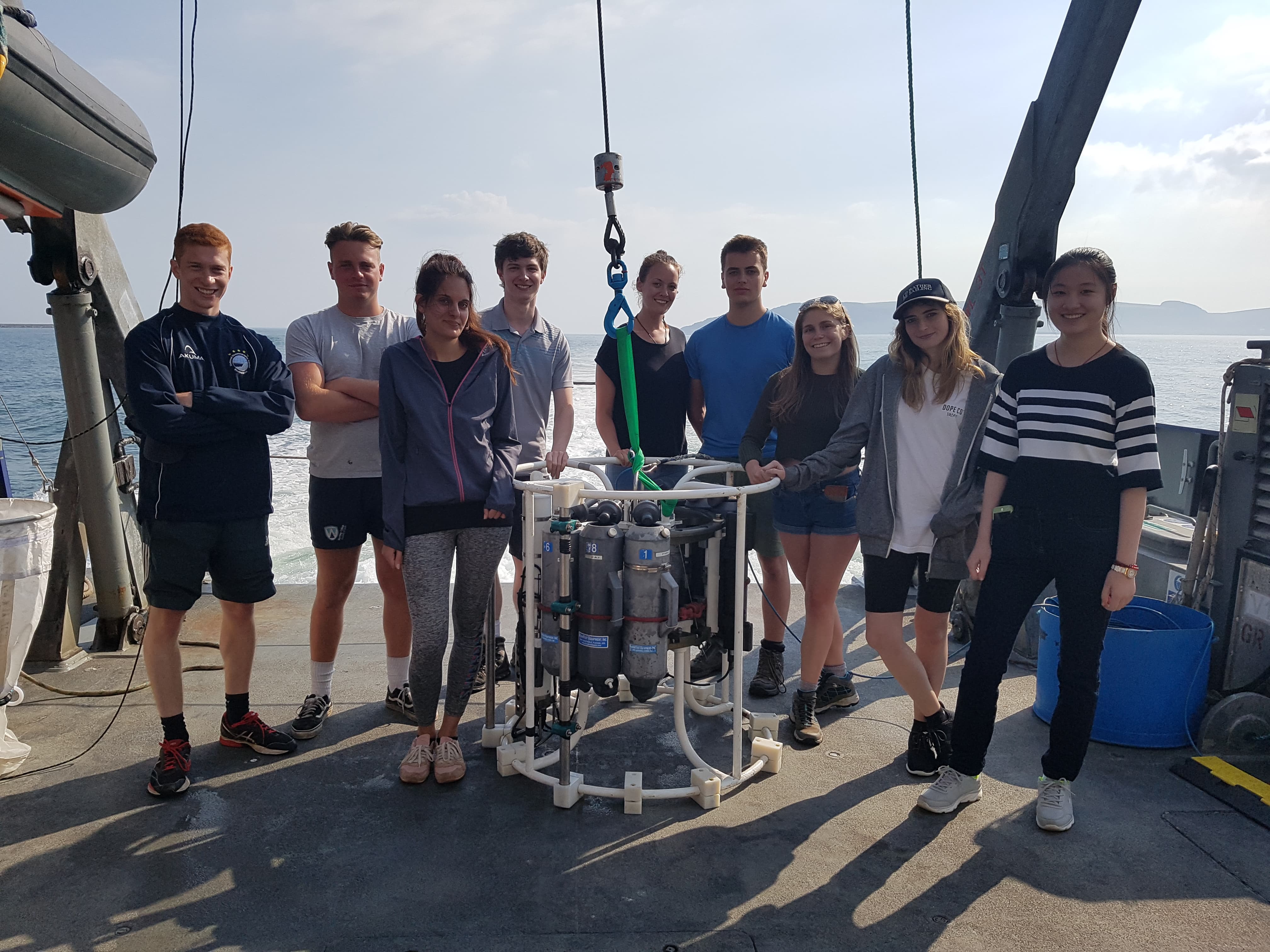Aim: to establish the effect of changing tidal streams and upwelling in shallow waters around the rocks on sampled variables
The Eddystone Rocks are located approximately 8 miles offshore from the mouth of the Tamar Estuary at 50o10’47.99’’N 04o15’53.99’’W, (Parsons.T.R, Maita.Y & Lalli.C., 1984) . Exposed to dynamic oceanographic conditions, they create an exciting opportunity to sample a number of biological, physical and chemical variables. Measurements at five individual stations located around the rocks were taken from on board the Callista using a CTD, ADCP, Secchi disk and a zooplankton sampling net throughout the duration of the day on the 5th July 2018. 8 of our stations were in a square going around the rocks, however, one station was also located further south to act as a control to compare the others to. Our Key findings showed that there was reduced mixing and a strong thermocline regardless of the position around Eddystone Rocks or direction of the tidal streams.
Methods:
A CTD rosette was deployed using a mechanically operated winch off the side of the vessel. Each niskin bottle was fired to the depth where the deep chlorophyll maximum was observed.
To collect oxygen, water samples were extracted from niskin bottles attached to a CTD rosette and decanted into glass bottles slowly to the top to prevent formation of air bubbles. Manganese (II) sulfate and alkaline iodide were added to the glass bottles and shaken, to form a precipitate which binds with the oxygen. Then bottles were sealed and stored in cold water to prevent gas exchange with the atmosphere. Two sets of glass bottles were used for laboratory analysis, whereby each bottle had had 1ml of sulphuric acid added and mixed using an end-point detector and titrated against sodium thiosulphate using an automatic oxygen titrate.
To collect nutrient samples, water samples were decanted into plastic bottles (to avoid contamination) and then filtered using fibreglass mesh and 100ml was filtered into plastic bottles and added to acetone then stored in the fridge to avoid microbial activity.


References:
- Parsons.T.R, Maita.Y & Lalli.C.,(1984), ‘A manual of Chemical and Biological methodsfor seawater analysis’, Pergamon, pp.173
Disclaimer: The views expressed on this website are those of 9 undergraduates and do not reflect the University of Southampton.